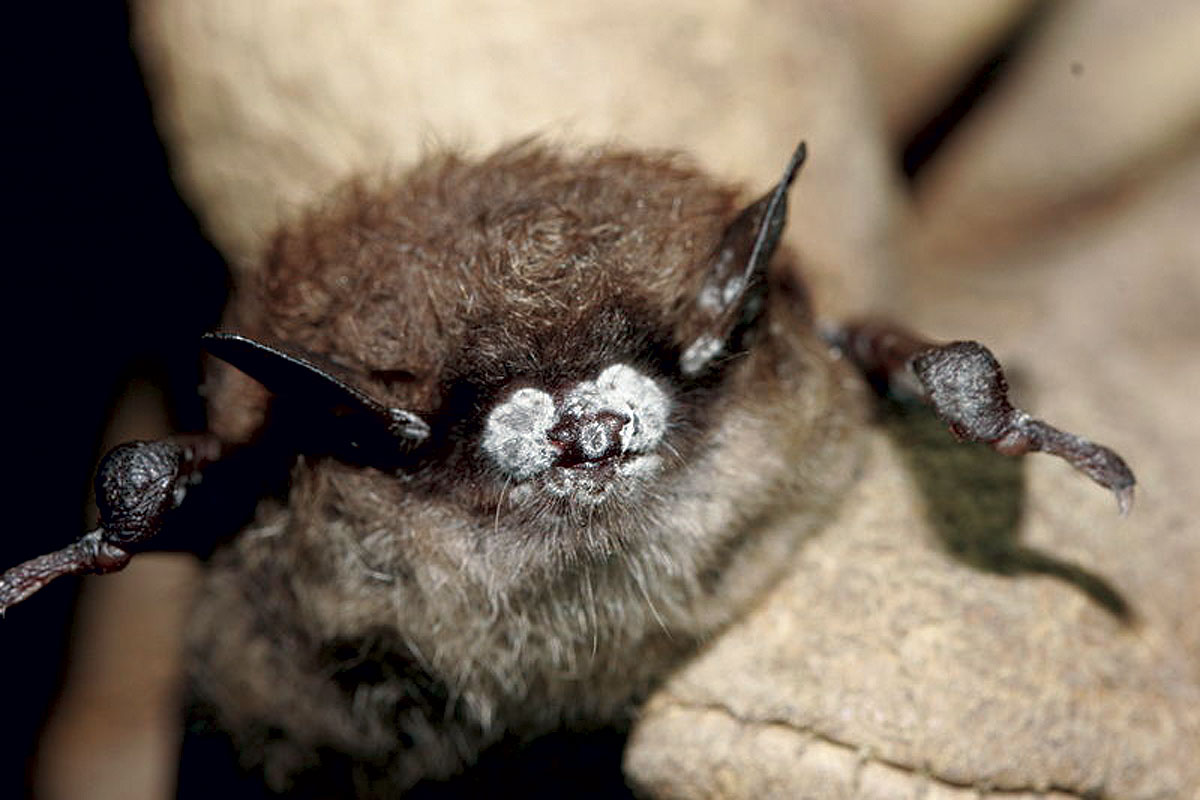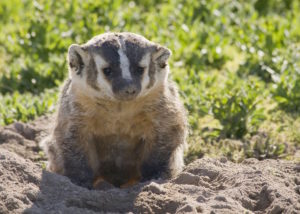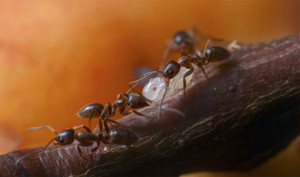Q: I’ve heard that white-nose syndrome has appeared in some West Coast bats. Are Bay Area bats now threatened? —Ellenor, San Francisco
A: This is a very depressing question but a good one. The first evidence of a new and disastrous bat disease showed up in a colony of hibernating little brown bats (Myotis lucifugus) in 2006 in upstate New York. A fungus (Pseudogymnoascus destructans), likely introduced from Europe, invades the bat’s skin and causes deep tissue damage. When the bats are hibernating it shows as a white fuzz on the face and wings, hence the name white-nose syndrome or WNS.
Bats that hibernate during the winter go into an energy-conserving state of torpor for days or weeks at a time throughout the hibernation, interspersed with periods of rousing. They have a limited amount of fat to take them through this long period of dormancy. But infected animals wake up more often than is normal, become restless, and sometimes even fly out into the cold. Because there are no insects to eat in winter the bats use up all their fat reserves and die. WNS, which thrives in the moist, cool conditions of the hibernacula, spreads rapidly via direct contact from bat to bat. Entire colonies have been wiped out in a single winter and it is estimated that over six million bats have died. As a result, the little brown bat, which was the most numerous bat in the Northeast, is probably going to be declared an endangered species soon.
WNS has spread rapidly to 29 states, reaching as far south as Alabama and Georgia, north into five provinces of Canada, and west to Minnesota and Arkansas. And then recently, much to the dismay of nature lovers, a bat with WNS was found in Washington State.
After rodents (Rodentia), bats (Chiroptera) are the most biodiverse order of mammals. More than 1,100 species exist throughout the world; they’re absent only in the far polar regions and some remote islands. There are 47 species of bats in the United States and Canada, 24 species in California, and at least 12 species in the San Francisco Bay region. About half of the U.S. and Canadian species hibernate; many others migrate during the winter.
Unfortunately, it appears that it’s not a question of if WNS will reach the Bay Area but when. Taylor Ellis (no relation), a wildlife biologist with the National Park Service, is working with other bat scientists to identify species most susceptible to WNS and take proactive measures. Of the species found in the Bay Area, two—the big brown bat (Eptesicus fuscus) and the little brown bat—have suffered from WNS back east. Three species of our local bats, also present back east, are known to be carriers of the fungus but are asymptomatic, which means they could act as WNS dispersers. Then there are eight species that are distributed strictly in the western U.S., so we don’t yet know how they will respond to the fungus.
As Ellis has said, bats here “might not even get the fungus in the first place; we don’t know. So the pathogen will get here, but it remains to be seen if it can flourish in local bat roosts and affect bats in our climate. Our big bat aggregations (matriarchal colonies) in California tend to be in spring and summer, and the bats are active and feeding throughout that time.” Additionally, WNS’s climatic requirements for growth—a combination of humidity and temperature—may not exist here. So we, and our local bats, may luck out.





